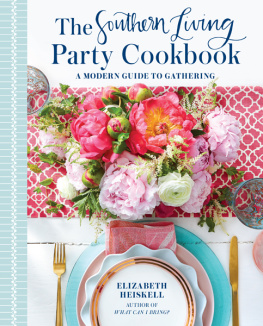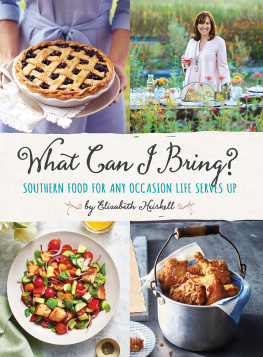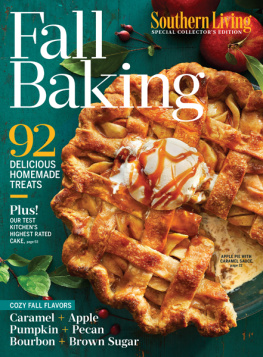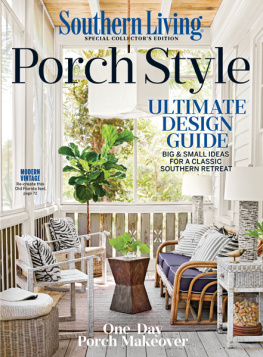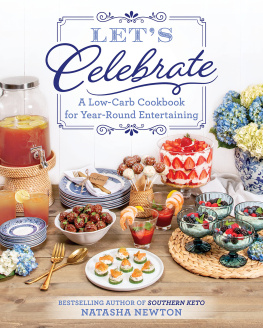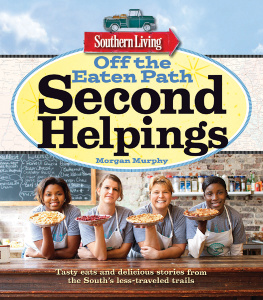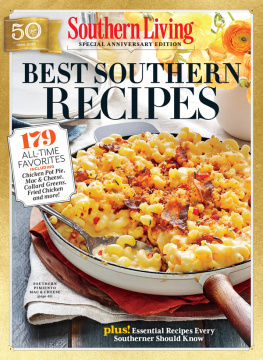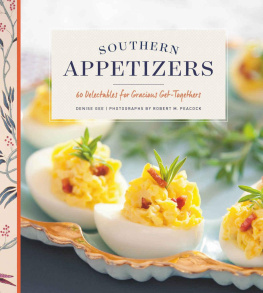
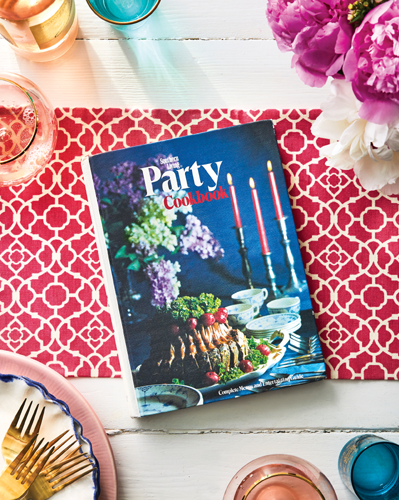
The Southern Living
Party Cookbook
A MODERN GUIDE TO GATHERING
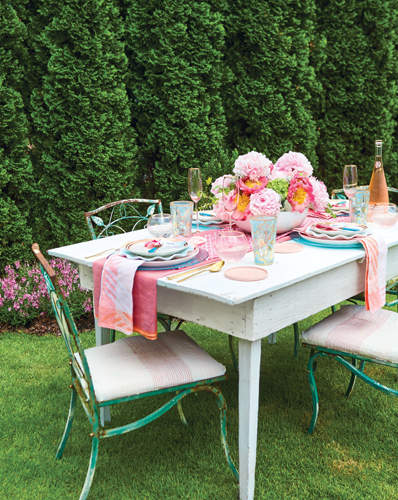
ELIZABETH HEISKELL
AUTHOR OF WHAT CAN I BRING?

CONTENTS

HOSTING HANDBOOK
Etiquette & Invites
The rules of etiquette are in constant evolution. The definition of an informal invitation in the original 1972 edition of the Southern Living Party Cookbook was described as a printed invitation that was not engraved. Today, an informal invitation might be designed and printed at home and mailed, or it might be sent in the form of a text, phone call, or email. Formal engraved invitations, on the other hand, havent changed much. Aside from including all the necessary party detailsoccasion, location, date, and timesuch an invitation also denotes who is invited (the addressee is the invited party) and whether the host requires a reply. Unless the host is a very close friend, it is not proper to ask if you may bring a guest when an invitation is addressed to you alone.
EXAMPLES
Mr. Simon Smith = Invitation for 1
Dr. Sarah and Mr. Simon Smith = Invitation for 2
Dr. Sarah Smith and Guest = Invitation for 1 or 2
Whether an invitation arrives electronically or in the mail, if a response is requested, the proper thing to do is to reply within a day or two of receipt and definitely before a given deadline.
RSVP Rpondez sil vous plait or Please reply. Let the host know if you will or will not attend.
REGRETS ONLY Let the host know only if you are unable to attend, and by the method notedphone or email. If no contact information is provided, your regret by handwritten note to the host is expected within a day or two.
RESPONSE CARD Fill in and return the card by the date noted.
NO RESPONSE CARD Formal invitation without a response card requires a written reply to the host within a day or two of receipt.
NO EXCEPTIONS
Dont be a no-show! Honor your reply. Cancel after accepting only if faced with an unavoidable, unforeseen circumstance and do so graciously by phone.
HOSTING HANDBOOK
Buffet Feng Shui
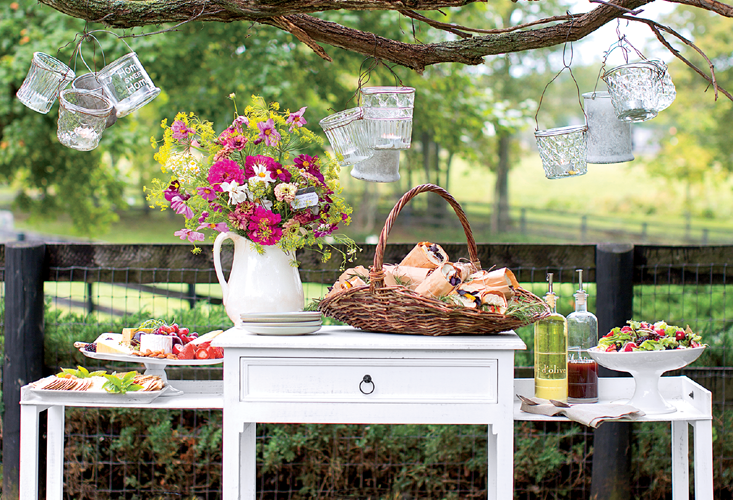
Mixing and mingling is the essence of a great party, so dont let a buffet line traffic jam put the brakes on a good time. Filling a plate should not necessitate a roadmap or compass. A clearly defined start to the line and well-defined order of dishes go a long way to making navigating the noshes a no-brainer.
VARY THE HEIGHTS Stack books beneath table linens or use pedestals to elevate some dishes for easier access and to add a little design panache.
SIGNAL THE START A stack of plates is a visual cue for the start of any buffet line. If the setup is on a table, pull it out from the wall so traffic can flow down both sides.
IDENTIFY DISHES A menu card at the start of the buffet, or individual place cards identifying each dish and any need-to-know information for guests (contains peanuts, for example), helps keep the line moving.
SAVE UTENSILS FOR LAST Arrange napkins and silverware at the end of the buffet so guests wont have to juggle them while filling plates.
GIVE SOME SUPPORT An empty saucer next to each dish gives guests a spot to rest serving spoons and protects Grandmas heirloom sideboard or dining table.
POSITION STRATEGICALLY Place food you have limited supply of at the end of the line. Guests will be less tempted to take a giant scoop when their plate is nearly full.
HOSTING HANDBOOK
A Glass for Every Toast
Stocking a bar with the ideal assortment of glassware takes restraint. There are so many options in different shapes, sizes, and materials that its easy to go from conservative collector of bar basics to I-just-have-to-have-it hoarder. Do you really need ceramic totem mugs from Samoa or stemmed coconut cups from Tonga? In addition to the standard 8-ounce and 16-ounce glasses you most likely have in your cabinet, stick only to specialty glasses you know you will use from the list below. Many can be enlisted for use in numerous ways.
BASICS
8-ounce glasses (Old-Fashioned/Rocks)
16-ounce glasses (Highball/Collins/Pint)
SPECIALTY GLASSES (FROM LEFT TO RIGHT)
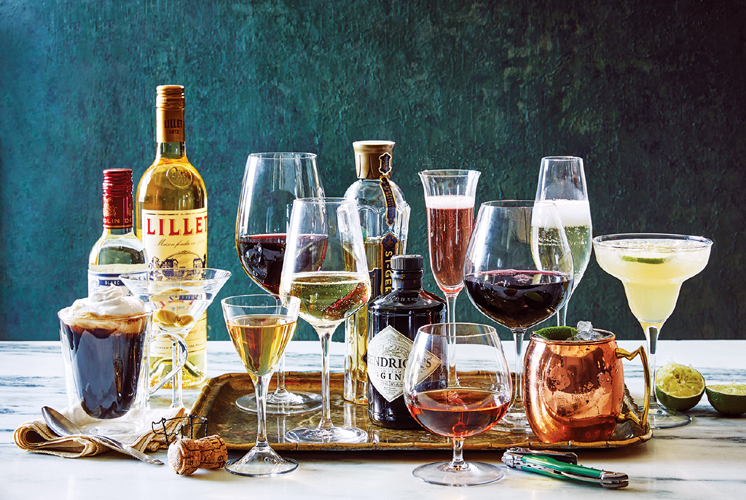
Irish Coffee Mugs
Cocktail Glasses (Martini)
Sherry Glasses
Red Wineglasses
White Wineglasses
Champagne Tulip Glasses
Brandy Snifters
Burgundy Glasses
Champagne Flutes
Moscow Mule Mugs
Margarita Glasses (or Coupe glasses)
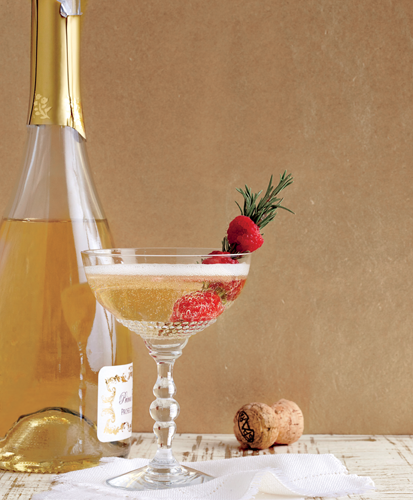
TOASTING TIPS
RULE #1 BE BRIEF
Its best to keep a toast under two or three minutes.
RULE #2 REHEARSE
Sometimes even spontaneity requires a little forethought. Practice out loud in the mirror a few times for the benefit of all.
RULE #3 GET (AND KEEP) THE CROWD'S ATTENTION
Avoid tapping your glass for attention. Simply stand and speak loudly and clearly.
RULE #4 DON'T DRINK TO YOURSELF
Avoid raising your glass, and remain seated, when the toast is offered to you.
RULE #5 LET THE HOST TOAST FIRST
Champagne glasses on the table indicate toasts will be made, but its traditionally reserved for the dessert course.
RULE #6 NEVER REFUSE TO PARTICIPATE
If youre a nondrinker, it is courteous to raise an empty glass, rather than none at all. If youre nervous about public speaking, have a couple of short toasts committed to memory in case youre unexpectedly called upon.
RULE #7 INFORM GUESTS IF YOU WOULD LIKE THEM TO TOAST
If youre hosting a formal party or wedding and would like for certain guests to toast the honorees, its polite to call them a week before the party to let them know so they may be thoughtfully prepared.
Setting the Table
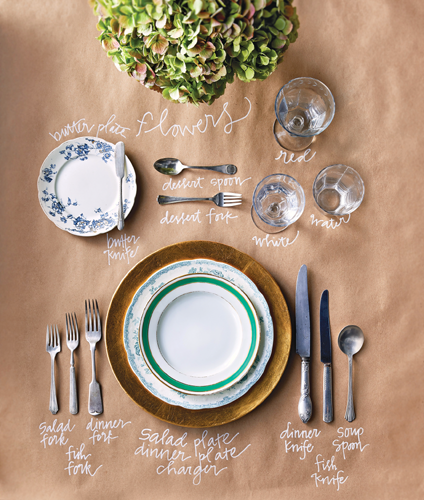
Large or small, formal or casual, seated gatherings are special occasions. A well-set table is like the perfect outfit. It makes a statement. Whether youre hosting a barbecue shindig with paper plates and plastic cutlery or a five-course dinner with wine pairings, setting the table with all the necessary pieces sets a tonelaid-back and casual or elegant and impressive. It makes a meal more enjoyable for your guests from start to finish, too, when all the necessary utensils are at hand. The setup above is the formula for an all-out formal feast. Simply subtract the pieces you do not need for your occasion.
HOSTING HANDBOOK
Gifts for the Host and Parting Favors
Next page
